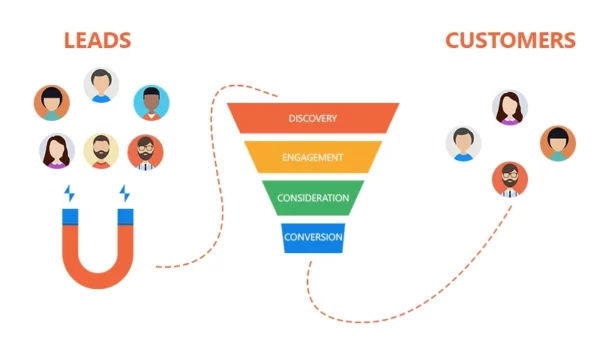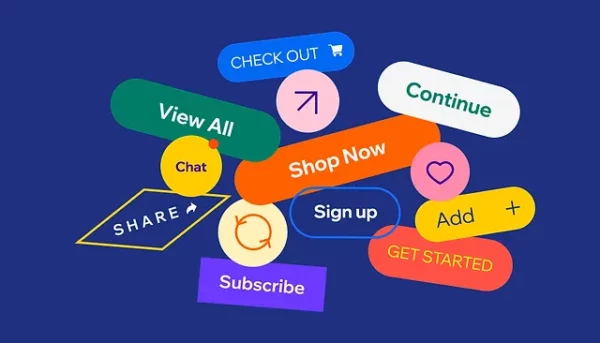Table of Contents
Content marketing for edtech can be a powerful tool for generating leads and boosting engagement if you are in the education industry. The cliche phrase that content is king also applies in the edtech sector. Hence, by creating compelling and informative pieces that are tailored to customer needs, you can promote loyalty while gaining traction in your market space. But with so many different strategies out there, it can be hard to know where to start.

That’s where a strong content marketing strategy comes in. With a clear plan in place, you can create content that resonates with your target audience, drives traffic to your website, and ultimately helps you achieve your business goals. Whether you are just getting started or looking to refine your existing approach, this article will provide you with the knowledge and tools you need to succeed.
With the exponential growth of the edtech industry, this article will help you learn how to create content that educates, entertains, and inspires your audience, and how to distribute that content across multiple channels to reach the widest possible audience. This will provide you with a clear understanding of what it takes to create a winning content marketing strategy for your edtech business.
Understanding EdTech and Its Market
As an EdTech content marketer, it is crucial to have a deep understanding of the industry and its market. As already mentioned, edtech is a rapidly growing sector that’s shaping the future of education. In this section, we will explore the rise of online learning and the key players and competition in EdTech.
The Rise of Online Learning

Online learning has been on the rise for several years, but the COVID-19 pandemic accelerated its growth. Educational institutions had to shift to online learning to comply with social distancing measures, which led to a surge in demand for EdTech tools and platforms. According to a report by HolonIQ, the global edtech market is expected to reach $404 billion by 2025, with online learning accounting for a significant portion of the growth.
Key Players and Competition in Edtech
Edtech is a highly competitive market, with several key players dominating the industry. Some of the notable players include Coursera, Udemy, Khan Academy, and edX. These companies offer a range of online courses and certifications that cater to different audiences, from K-12 students to working professionals.
In addition to these players, there are also several startups and emerging companies that are disrupting the industry with innovative solutions. These companies are often backed by venture capital firms that invest in edtech startups. According to a report by EdSurge, venture capital investment in EdTech reached a record high of $16.1 billion in 2020, indicating the high potential for growth in the industry.
As a content marketer in the edtech industry, it’s essential to keep up with the latest trends and developments in the market. By understanding the key players, competition, and growth potential, you can create a content marketing strategy that resonates with your target audience and drives results.
Developing a Content Marketing Strategy for Edtech
Developing a content marketing strategy for EdTech is essential to attract and engage your target audience, build brand awareness, and drive conversions. Here are some key steps to follow:

Identifying Target Audience
Before you start developing your content marketing strategy, you need to identify your target audience. Edtech companies may have different target audiences, including educators, students, administrators, or schools. You need to know who your target audience is to create content that resonates with them.
Setting Clear Marketing Goals
Once you have identified your target audience, you need to set clear marketing goals. Your marketing goals should align with your overall business objectives. For example, if your goal is to increase brand awareness, you may want to focus on creating content that educates your target audience about your products and services.
Content Planning and Keyword Research
The third step is to develop a content plan and conduct keyword research. Your content plan should include the types of content you will create, how often you will publish, and where you will publish it. Keyword research will help you identify the keywords and phrases your target audience is searching for, which will help you create content that is optimized for search engines.
When developing your content marketing strategy, it’s important to focus on your niche. Edtech is a highly competitive industry, and you need to differentiate yourself from your competitors.
By creating content that is tailored to your niche and target audience, you can attract and engage your audience and drive conversions. Following these steps, you can create a content marketing strategy that drives results, helps you achieve your business objectives, and earns you a good return on investment.
Content Creation and Distribution

Creating high-quality educational content is the backbone of any successful content marketing strategy for an edtech business. Your content must be informative, engaging, and tailored to meet the needs of your target audience. Here are some tips to help you craft high-quality educational content:
Crafting High-Quality Educational Content
- Identify your target audience: Before creating any content, you need to identify your target audience. This will help you to create content that resonates with them and meets their needs. You can create buyer personas to help you understand your target audience better.
- Focus on the benefits: Your educational content should focus on the benefits that your product or service can provide to your target audience. This will help to keep them engaged and interested in your content.
- Use visuals: Visuals such as infographics, images, and videos can help to make your content more engaging and easier to understand.
- Provide value: Your educational content should provide value to your target audience. This can be achieved by providing tutorials, guides, case studies, and other informative content.
Leveraging Blogs and Articles
Blogs and articles are a great way to distribute your educational content. They can help to establish your business as an authority in your industry and drive traffic to your website. Here are some tips for leveraging blogs and articles:
- Create a content calendar: A content calendar can help you to plan and organize your blog and article content. This will ensure that you are consistently publishing high-quality content that meets the needs of your target audience.
- Use SEO: Search engine optimization (SEO) can help to improve the visibility of your blog and article content in search engine results. This can help to drive more traffic to your website and increase your brand’s visibility.
- Promote your content: Promoting your blog and article content on social media and other channels can help to increase its reach and engagement.
Using Video and Webinars Effectively

Video and webinars can be powerful tools for distributing your educational content. They can help to make your content more engaging and easier to understand. Here are some tips for using video and webinars effectively:
- Keep it short: Your videos and webinars should be short and to the point. This will help to keep your audience engaged and interested in your content.
- Provide value: Your videos and webinars should provide value to your target audience. This can be achieved by providing tutorials, case studies, and other informative content.
- Use visuals: Visuals such as slides and images can help to make your videos and webinars more engaging and easier to understand.
- Promote your content: Promoting your videos and webinars on social media and other channels can help to increase their reach and engagement.
By following these tips, you can create and distribute high-quality educational content that resonates with your target audience and drives engagement.
Maximizing Engagement and Conversions
To get the most out of your content marketing strategy, it’s crucial to maximize engagement and conversions. 
Social Media Marketing for Edtech
Social media is a powerful tool for engaging with your audience and driving conversions. By sharing valuable content and interacting with your followers, you can build trust and establish your brand as a thought leader in the edtech space.
To make the most of social media marketing, it’s important to choose the right platforms and tailor your content to each one. For example, X (formerly known as Twitter), is great for sharing quick updates and engaging in real-time conversations, while LinkedIn is ideal for sharing more in-depth thought leadership pieces and connecting with industry professionals.
Email Marketing and Lead Nurturing
Email marketing is another effective way to engage with your audience and drive conversions. By sending targeted campaigns to your leads and subscribers, you can nurture them through the sales funnel and build a relationship with them over time.
It’s important to segment your audience and tailor your content to each group when implementing email campaigns. For example, you might send a welcome email to new subscribers, a product demo to leads who have shown interest in a specific feature, and a customer success story to current customers.
Optimizing Landing Pages and CTAs
Finally, optimizing your landing pages and calls-to-action (CTAs) is crucial for maximizing conversions. By creating clear, compelling CTAs and designing landing pages that are easy to navigate and visually appealing, you can increase the chances that visitors will take the desired action.

To optimize your landing pages and CTAs, it’s important to test different variations and track your results. For example, you might try using different colors, fonts, and wording for your CTAs, or testing different page layouts and content formats for your landing pages.
Focusing on social media marketing, email marketing and lead nurturing, and optimizing your landing pages and CTAs, you can maximize engagement and conversions and get the most out of your content marketing strategy.
Measuring Success and Optimizing Performance
As you work on your content marketing for edtech company, it’s important to measure your success and optimize your performance. Here are some key areas to focus on:
Analytics and KPIs in Content Marketing for EdTech
Analytics and KPIs (key performance indicators) are essential for measuring the success of your content marketing efforts. By tracking metrics such as website traffic, engagement rates, and conversion rates, you can gain valuable insights into what’s working and what’s not.

Some key KPIs to track for EdTech marketing include:
- Website traffic: This includes metrics such as unique visitors, pageviews, and bounce rate.
- Engagement rates: This includes metrics such as time on site, pages per session, and social media likes and shares.
- Conversion rates: This includes metrics such as lead generation, email sign-ups, and product purchases.
SEO and Backlink Strategies
Search engine optimization (SEO) and backlink strategies are essential for driving traffic to your website and improving your search engine rankings. By optimizing your website for search engines and building high-quality backlinks, you can improve your visibility and attract more potential customers to your site.
Some key SEO and backlink strategies to consider for edtech marketing include:
- Conducting keyword research and optimizing your website content for relevant keywords.
- Building high-quality backlinks from reputable websites in your industry.
- Optimizing your website structure and metadata for search engines.
A/B Testing and Data-Driven Decisions
A/B testing and data-driven decisions are essential for optimizing your content marketing strategy for better results. By testing different variations of your content and analyzing your data, you can make data-driven decisions to improve your conversion rates and ROI.
Some key areas to consider for A/B testing and data-driven decisions in edtech marketing include:
- Testing different variations of your website content, such as headlines, calls-to-action, and landing pages.
- Analyzing your data to identify trends and patterns in user behavior.
- Making data-driven decisions to optimize your content marketing strategy for better results.
Implementing all the above strategies can improve your conversion rates and ROI for your edtech company. Content marketing is king, making it essential to get it right for successful outcomes in your marketing efforts.







